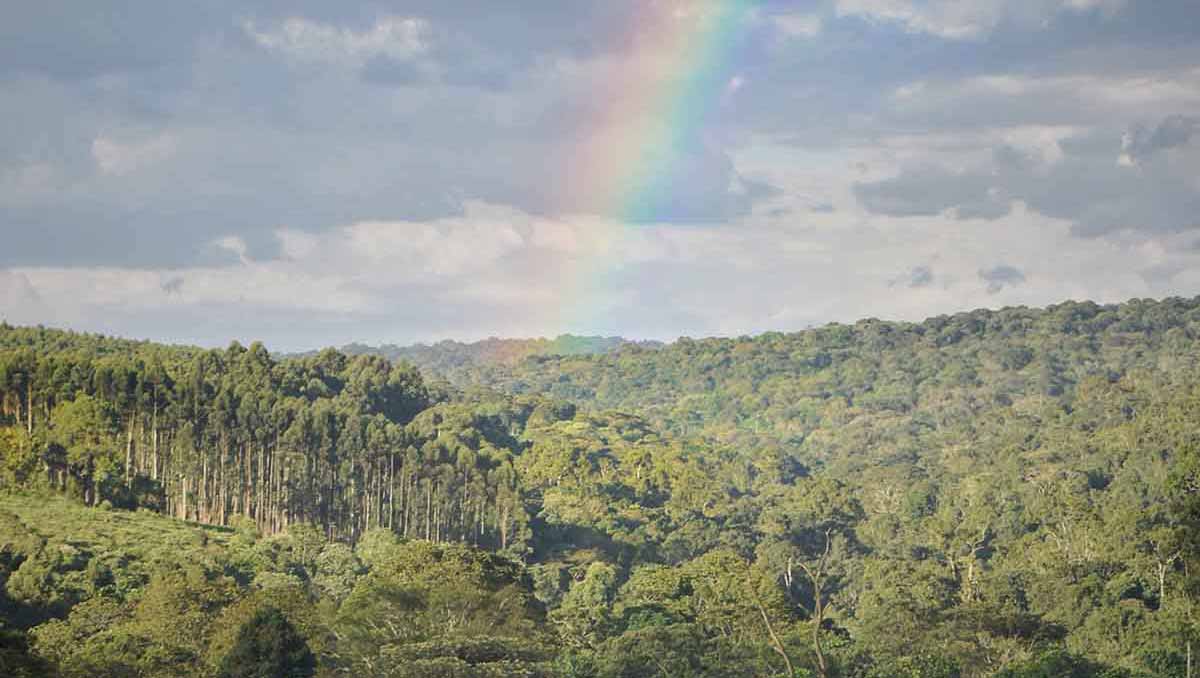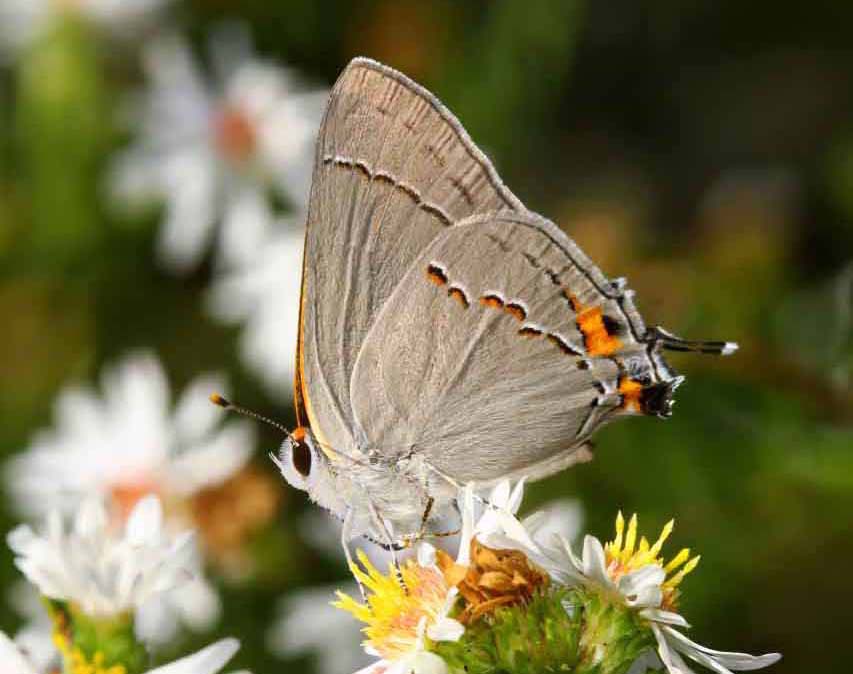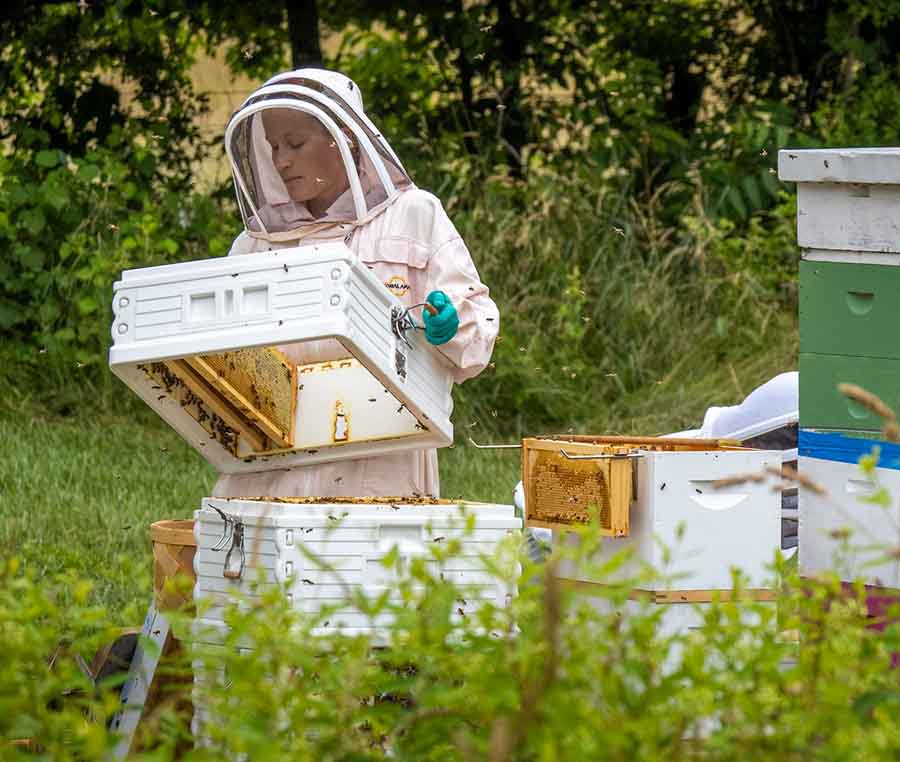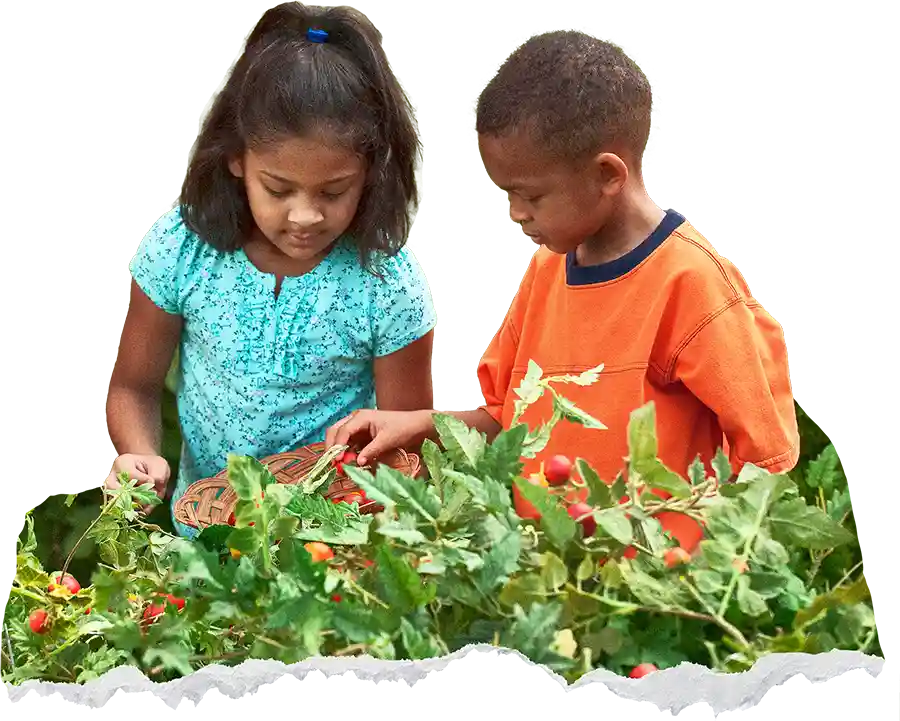SOLUTION
Pollinators
Achieving 30×30 by aiding our pollinators
Created in partnership with
The Bee Girl Organization
What is pollinator restoration?
The core principle of pollinator restoration is to create healthy environments for pollinating animals to improve biodiversity and ecosystems. This is accomplished through activities such as pesticide reduction and elimination, conserving and planting pollinator-friendly crops, sustainable agricultural practices, protecting habitat, and prioritizing native plant species in landscaping.1“Biodiversity in Focus: United States Edition,” NatureServe
≫
“Our pollinators are being mostly impacted by the 4-P’s: pesticides, pests, pathogens, and poor nutrition.”
– Ginelle Dekker, The Bee Girl Organization

Traditional Indigenous Knowledge
Humans have worked closely with pollinators for thousands of years. Throughout history, Indigenous communities around the world have used pollinator-friendly agricultural practices, cultivating opportunities for pollinators and the plant species they support to thrive.2“Human relationship with honeybees dates back 9,000 years,” PBS NewsNour ≫; “Indigenous pollination conservation practices,” CSIRO ≫;
The Ogiek people of central Kenya have been practicing beekeeping and honey harvesting throughout the highlands for millennia. Located in what is today known as the Mau Forest Complex (above), bees and honey continue to be an integral part of Ogiek culture and customs, from a critical food source during times of drought to medicine and even marriages. Scientists believe this stewardship has contributed in large part to the forest’s existing biodiversity.3“Preserving Indigenous Wisdom,” U.N. Global Policy Centre on Resilient Ecosystems and Desertification ≫ (IMAGE: Bett Duncan/Wikimedia Commons)

Pollinators and Climate Change
Today, modern agriculture and climate change are the biggest threats to bee and pollinator populations around the world. Monocropping, pesticide use, and fossil fuel-reliant machinery are incredibly damaging to pollinator populations and habitats. Warming global temperatures as a result of a changing climate are disrupting seasonal timing and altering plant scents, which make it difficult for bees to find food sources.4“At night, pollution keeps pollinating insects from smelling the flowers,” Elizabeth Pennisi, Science ≫
Pollinators and 30x30
The 30×30 target emerged from a recognized need to preserve biodiversity in ecosystems on land and in water. So how is this related to pollinators?
Pollinators are keystone species in nearly all land-based ecosystems, contributing significantly to the ecological diversity of their habitats. Due to their pollination of most plant species (more than 75% of flowering species and 35% of crops for human consumption), pollinators help promote plant and animal biodiversity as well as soil health. If we want to protect our lands and food security, we must also protect our pollinators.5“The Importance of Pollinators,” U.S. Department of Agriculture ≫
Pollinators: The Low Down
Learn about the who, where, and when of leveraging pollinators for 30×30 goals.
- The Who
- The Where
- The When
The loss of pollinators affects everyone, and there are things we do in our everyday lives that can be surprisingly harmful to these helpful critters. That fact can be scary, but it also means that we all can be part of the solution. That said, it’s important to recognize that there are groups and industries with significantly more influence (often doing more harm) than others, and this is where the greatest change will need to be made.
Here’s who can help the most:

Gray hairstreak butterfly, Wisconsin (IMAGE: Preston Keres/U.S. Department of Agriculture)
Pollinators exist nearly everywhere, so solutions need to be broad and consistent. We must identify the source of pollinator stressors. Pesticides and habitat loss are frequently linked to pollinator decline… and they’re taking place in agriculture, in cities and suburbs, and even in our own backyards. Let’s address them at the source.
- Sustainable Agriculture | Transitioning to sustainable agriculture at a much larger scale and incorporating practices such as pollinator-friendly cover crops, crop rotation, and the elimination of tillage makes for a much healthier and more fruitful pollinator habitat. Other areas of agriculture, such as ranching and vineyards, can also be improved with pollinator-friendly habitats. Creating space for pollinators among livestock and crops (such as planting companion flowers and decreasing pesticide spraying) makes for a balanced ecosystem and healthier lands, animals, and produce.
- Urban Community Gardens | Education on the importance of pollinators to our ecosystems and green spaces has inspired many municipalities, companies, and community groups to develop pollinator-friendly gardens. These pesticide-free gardens maintain plant species that attract and feed pollinators, and give a boost to local pollinator populations.
- Your Yard | Believe it or not, how you landscape and manage your lawn can have a significant, tangible impact—not only for your own backyard or neighborhood, but potentially for your entire region. No matter how big or small, our yards act as habitat corridors, enabling critical pollinators to migrate and improve biodiversity. Keep your lawn free of toxic chemicals and plant native, pollinator-friendly flowers.
Pollinator habitats are complex and unique. Unfortunately, this means there is no one “exact” prescription that will work to recover all pollinators or bee species (there are more than 4,000 in North America alone). And there is no way to determine how long it will take for each species to recover.6“Beauty, Behavior, Benefits: The Diversity and Value of Our Native Bees,” Finger Lakes Land Trust ≫
What we do know, however, is that we need to reduce our harm. And those efforts need to start right now.

Beekeeper Katy Ehmann harvests honey from bee hives in West River, Maryland. (IMAGE: Preston Keres/U.S. Department of Agriculture)
Get Involved
EVERYONE can help restore pollinator populations, and strong public support is one of the fastest ways to set change in motion.
Explore below to learn more!
- Policy
- Education
- Support
- Bills
- Engage Congress
- Vote
The following bills for pollinator support have been introduced in congress. Read through each bill below to learn what it’s about and its current status, then continue on to the “Engage Congress” tab to discover how to easily request your congressperson’s support for these pieces of legislation.
TIP: when looking at the bill name and number, “H.R.” stands for House of Representatives and “S” stands for Senate.
H.R.4079 – Saving America’s Pollinators Act of 2021
- SUMMARY: This bill addresses the use of certain pesticides and the health and status of native bees and other pollinators.
- STATUS: As of 7/28/21 – Committee of Agriculture referred bill to the subcommittee on Biotechnology, Horticulture, and Research. (House)
S.3510 – Building Native Habitats at Federal Facilities Act
- SUMMARY: This bill requires the priority and consideration of using native plants in Federal projects, and for other purposes.
- STATUS: As of 12/13/2023 – Read twice and referred to the Committee on Environment and Public Works. (Senate)
S.2199 – Pollinator-Friendly Plant Labeling Act
- SUMMARY: This bill directs the Department of Agriculture (USDA) to establish a voluntary pollinator-friendly plant labeling and certification program.
- STATUS: As of 6/22/2023 – Read twice and referred to the Committee on Agriculture, Nutrition, and Forestry. (Status)
Not sure who represents you in congress? Follow these quick steps to find your congressional representatives and how to contact them:
- Click here and input your home address, then click the search icon.
- Under the name of the representative you want to reach, look for the section titled “Contact.”
- To make a phone call, copy the phone number provided.
- To send an email (or other form of outreach), select the blue hyperlinked word “contact.”
- This will take you to a page with different methods for reaching your representative.
Register to Vote
Not yet registered to vote? Get started:
It’s super easy! All you have to do is:
- Select the state or territory you live in
- Start your online voter registration
When registering, make sure you have a valid form of identification. This could be your Driver’s License, State ID, and/or Social Security Number.
Find Your Voting Location
Are you a new voter? Have you moved recently? Or maybe you just want to double check you know where you’re going? Find your voting location:
Remind Others to Vote
- Text election reminders to friends and family
- Snap that “I Voted” selfie and share it with the world (this simple act has been shown to increase voter turnout by 4.1%)
- Help others create a voting plan
- Sign up for programs like When We All Vote to help educate others on the importance of voting, important deadlines, and more

- The Issues
- Advocate
- Keep Learning
Education is the first step in building public support for the importance of pollinators. However, a general lack of consistent, accessible education is making pollinator protection more difficult. After all, we don’t know what we don’t know.
Teaching children and adults alike the truths about pollinators and the harms they face from their widespread myths as well as establishing an understanding of what a healthy ecosystem looks like is paramount if we want to build long-term, sustainable solutions for addressing pollinator conservation and protection.
Today, children learn about pollinators in school and there is a general belief that “bees are good,” but not many people know how significant the decline has been for bee populations because of human activity, or how this impacts our everyday lives from the food we eat to the air we breathe. More education is needed to get people on board with widespread pollinator protections. Education also needs to be happening at the legislative level. Lawmakers with the power to support new and existing legislation should have a firm grasp of these basic concepts as well as the ongoing public support for change.
Share This Page
Help educate your network of friends, family and followers when you share this page and post about it on social media!
Explore Further
Interested in learning even more about the importance of pollinators for the protection and wellbeing of our environment? We’ve compiled a list of key resources to help you move forward on your learning path.
Experts
Meet the professionals fighting for our pollinators.
Learning Hubs
Other Resources

- Nonprofit Limitations
- Donate
- Volunteer
Ask any nonprofit in America (and around the world) what their greatest two challenges are, and they are very likely to say the same things: funding and capacity.
Nonprofits supporting pollinators and biodiverse habitats are no stranger to this. That’s why your support—be it financial or through volunteer work—makes an enormous difference. By supporting an organization with your time and/or money, you are helping to increase their impact, expand their reach, and make it easier for good to be done for our planet and its pollinator populations.
Donate to Nonprofits
Meet the vetted EarthShare Nonprofit Partners making a difference for pollinators and donate to their cause!
- The Bee Girl Organization | Promoting bee habitat conservation through research, regeneration, art, and education
- Beyond Pesticides | Protecting environmental (pollinator) and public health by leading the transition away from pesticides
- California Native Plant Society | Conserving California native plants and their habitats through education, stewardship, and advocacy
- Florida Native Plant Society | Restoring native plant species in Florida to support healthy ecosystems, wildlife, and people
- NatureServe | Leveraging science, data, and technology to guide biodiversity conservation and stewardship
- Northwest Center for Alternatives to Pesticides | Inspiring the use of ecologically sound solutions to reduce pesticides throughout the Northwest
- People and Pollinators Action Network | Combining pollinator protection with community development, policy, agriculture, and habitat management
- Xerces Society for Invertebrate Conservation | Preserving the natural world through the conservation of invertebrates and their habitats
Attend Events & Volunteer
Want more ways to get involved? Check out events and volunteer opportunities happening online, across the country, and near you.
- The Bee Girl Organization | Events| Oregon
- Beyond Pesticides | Volunteer | Virtual
- California Native Plant Society | Volunteer | California
- Florida Native Plant Society | Events | Florida
- NatureServe | Events | National
- Northwest Center for Alternatives to Pesticides | Events | Oregon
- People and Pollinators Action Network | Volunteer | Colorado

- Policy
- Education
- Support
- Bills
- Engage Congress
- Vote
The following bills for pollinator support have been introduced in congress. Read through each bill below to learn what it’s about and its current status, then continue on to the “Engage Congress” tab to discover how to easily request your congressperson’s support for these pieces of legislation.
TIP: when looking at the bill name and number, “H.R.” stands for House of Representatives and “S” stands for Senate.
H.R.4079 – Saving America’s Pollinators Act of 2021
- SUMMARY: This bill addresses the use of certain pesticides and the health and status of native bees and other pollinators.
- STATUS: As of 7/28/21 – Committee of Agriculture referred bill to the subcommittee on Biotechnology, Horticulture, and Research. (House)
S.3510 – Building Native Habitats at Federal Facilities Act
- SUMMARY: This bill requires the priority and consideration of using native plants in Federal projects, and for other purposes.
- STATUS: As of 12/13/2023 – Read twice and referred to the Committee on Environment and Public Works. (Senate)
S.2199 – Pollinator-Friendly Plant Labeling Act
- SUMMARY: This bill directs the Department of Agriculture (USDA) to establish a voluntary pollinator-friendly plant labeling and certification program.
- STATUS: As of 6/22/2023 – Read twice and referred to the Committee on Agriculture, Nutrition, and Forestry. (Status)
Not sure who represents you in congress? Follow these quick steps to find your congressional representatives and how to contact them:
- Click here and input your home address, then click the search icon.
- Under the name of the representative you want to reach, look for the section titled “Contact.”
- To make a phone call, copy the phone number provided.
- To send an email (or other form of outreach), select the blue hyperlinked word “contact.”
- This will take you to a page with different methods for reaching your representative.
Register to Vote
Not yet registered to vote? Get started:
It’s super easy! All you have to do is:
- Select the state or territory you live in
- Start your online voter registration
When registering, make sure you have a valid form of identification. This could be your Driver’s License, State ID, and/or Social Security Number.
Find Your Voting Location
Are you a new voter? Have you moved recently? Or maybe you just want to double check you know where you’re going? Find your voting location:
Remind Others to Vote
- Text election reminders to friends and family
- Snap that “I Voted” selfie and share it with the world (this simple act has been shown to increase voter turnout by 4.1%)
- Help others create a voting plan
- Sign up for programs like When We All Vote to help educate others on the importance of voting, important deadlines, and more

- The Issues
- Advocate
- Keep Learning
Education is the first step in building public support for the importance of pollinators. However, a general lack of consistent, accessible education is making pollinator protection more difficult. After all, we don’t know what we don’t know.
Teaching children and adults alike the truths about pollinators and the harms they face from their widespread myths as well as establishing an understanding of what a healthy ecosystem looks like is paramount if we want to build long-term, sustainable solutions for addressing pollinator conservation and protection.
Today, children learn about pollinators in school and there is a general belief that “bees are good,” but not many people know how significant the decline has been for bee populations because of human activity, or how this impacts our everyday lives from the food we eat to the air we breathe. More education is needed to get people on board with widespread pollinator protections. Education also needs to be happening at the legislative level. Lawmakers with the power to support new and existing legislation should have a firm grasp of these basic concepts as well as the ongoing public support for change.
Share This Page
Help educate your network of friends, family and followers when you share this page and post about it on social media!
Explore Further
Interested in learning even more about the importance of pollinators for the protection and wellbeing of our environment? We’ve compiled a list of key resources to help you move forward on your learning path.
Experts
Meet the professionals fighting for our pollinators.
Learning Hubs
Other Resources

- Nonprofit Limitations
- Donate
- Volunteer
Ask any nonprofit in America (and around the world) what their greatest two challenges are, and they are very likely to say the same things: funding and capacity.
Nonprofits supporting pollinators and biodiverse habitats are no stranger to this. That’s why your support—be it financial or through volunteer work—makes an enormous difference. By supporting an organization with your time and/or money, you are helping to increase their impact, expand their reach, and make it easier for good to be done for our planet and its pollinator populations.
Donate to Nonprofits
Meet the vetted EarthShare Nonprofit Partners making a difference for pollinators and donate to their cause!
- The Bee Girl Organization | Promoting bee habitat conservation through research, regeneration, art, and education
- Beyond Pesticides | Protecting environmental (pollinator) and public health by leading the transition away from pesticides
- California Native Plant Society | Conserving California native plants and their habitats through education, stewardship, and advocacy
- Florida Native Plant Society | Restoring native plant species in Florida to support healthy ecosystems, wildlife, and people
- NatureServe | Leveraging science, data, and technology to guide biodiversity conservation and stewardship
- Northwest Center for Alternatives to Pesticides | Inspiring the use of ecologically sound solutions to reduce pesticides throughout the Northwest
- People and Pollinators Action Network | Combining pollinator protection with community development, policy, agriculture, and habitat management
- Xerces Society for Invertebrate Conservation | Preserving the natural world through the conservation of invertebrates and their habitats
Attend Events & Volunteer
Want more ways to get involved? Check out events and volunteer opportunities happening online, across the country, and near you.
- The Bee Girl Organization | Events| Oregon
- Beyond Pesticides | Volunteer | Virtual
- California Native Plant Society | Volunteer | California
- Florida Native Plant Society | Events | Florida
- NatureServe | Events | National
- Northwest Center for Alternatives to Pesticides | Events | Oregon
- People and Pollinators Action Network | Volunteer | Colorado

Where to Start
We’ve curated a list of nonprofits doing work with pollinators in the United States and around the world. Learn more about the incredible work they’re doing and show your support.
Check out these orgs!
The Bee Girl Organization*The Bee Girl Foundation is our 30×30 Partner for pollinators and contributed their knowledge, experiences, and on-the-ground expertise to improve accuracy and storytelling. | Promoting bee habitat conservation through research, regeneration, art, and education
Beyond Pesticides | Protecting environmental (pollinator) and public health by leading the transition away from pesticides
California Native Plant Society | Conserving California native plants and their habitats through education, stewardship, and advocacy
Florida Native Plant Society | Restoring native plant species in Florida to support healthy ecosystems, wildlife, and people
NatureServe | Leveraging science, data, and technology to guide biodiversity conservation and stewardship
Northwest Center for Alternatives to Pesticides | Inspiring the use of ecologically sound solutions to reduce pesticides throughout the Northwest
People and Pollinators Action Network | Combining pollinator protection with community development, policy, agriculture, and habitat management
Xerces Society for Invertebrate Conservation | Preserving the natural world through the conservation of invertebrates and their habitats
* EARTHSHARE 30×30 PARTNER